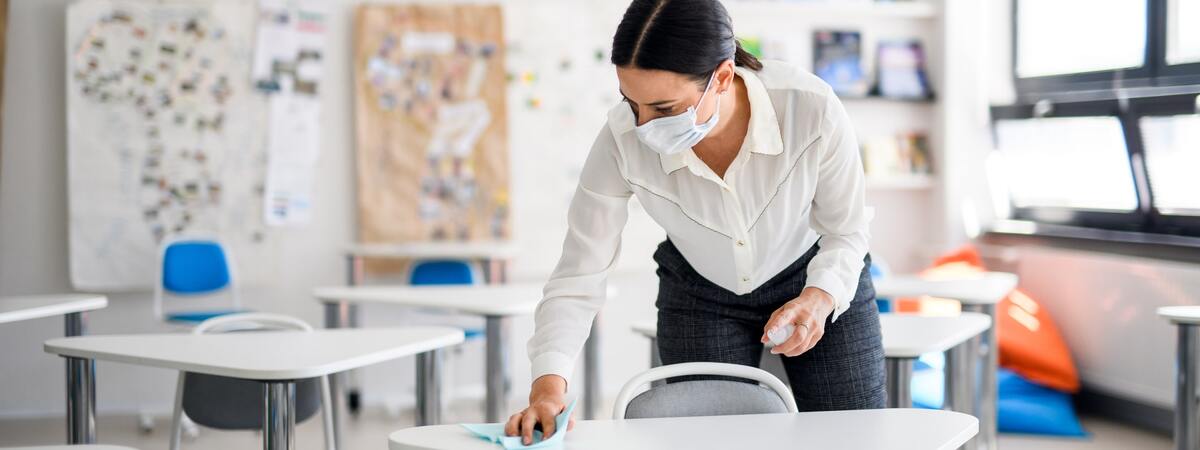By late June, rules around ‘bubbles’ in schools to prevent the spread of coronavirus meant that over 5% of English pupils were out of school at any one time. Yet fewer than 1% of pupils had actually tested positive.
As part of a wholesale easing of restrictions, the government is axing the school bubble system from 19 July. This will mean that the next academic year will look a lot more like normal than the preceding two. Pupils will only be required to self-isolate if they produce a positive test, rather than if someone in their bubble has caught Covid.
However, that sense of normality will only be partial for the foreseeable future. While cases are on the rise, school leaders will still have to contend with absences among faculty and students. Adapting to this all might be a challenge. Here is what school leaders and teaching staff will need to know about the end of Covid bubbles in schools.
1. Bubbles will end before the summer holidays
The bubble system comes to a close on 19 July, alongside most of England’s remaining coronavirus restrictions. This means that the final week of term will be a snap adjustment for the majority of schools.
The immediate effects of this are tempered by the fact that current isolation rules will continue until 16 August. However, class sizes will return to their pre-pandemic sizes, and assemblies will be allowed to resume. School leaders need to make sure they have sufficient staff numbers in place.
Given current high levels of transmission of the Delta variant, it is important that schools have contingency plans for swiftly dealing with unexpected staff absences.
2. Tracing cases will no longer be headteachers’ responsibility
From September to May of this academic year, headteachers have put in an average of 44 hours extra work getting in touch with the close contacts of children testing positive for Coronavirus.
From 19 July, this burden will be lifted. Responsibility for identifying and isolating contacts will be put in the hands of NHS Track and Trace.
3. On-site testing is returning
The DfE is recommending that all secondary school pupils take two lateral flow tests, three-to-five days apart, on the week of their return to school in September.
To ensure this can happen, schools are being urged to provide on-site testing facilities using equipment supplied by the government. School leaders need to be confident that their staff have the right training to help pupils conduct these tests.
4. Schools may decide on their own guidance
While social distancing and face masks will no longer be mandated from 19 July, the government is urging people to proceed past that date with ‘caution’. This emphasis on personal responsibility and vigilance could be instructive for how senior leadership teams choose to handle the post-bubble world.
Schools might consider issuing their own guidelines for Covid-safe behaviour on the premises. Any such guidance should be written up in consultation and collaboration with parents and pupils. All staff should be made aware of guidance, and able to relay it accurately and clearly.
5. Vulnerable staff may need extra support
The end of the bubble system is a great source of relief for many teachers. Yet for others, the sweeping away of our current methods of virus control will undoubtedly evoke anxiety.
Some of your staff may be considered Clinically Vulnerable (CV) or Clinically Extremely Vulnerable (CEV) to the coronavirus. While members of these groups are no longer required to shield, it is possible that they would appreciate arrangements being made for them to reduce their face-to-face contact during periods of high viral prevalence.
Other staff may not qualify for these categories but still feel a worrisome level of exposure and personal risk. They need to be able to rely on a robust HR department and a consultative, responsive approach from senior leaders.
Having access to an auxiliary pool of flexible educators will make it easier for school leaders to support their staff’s mental health while safely delivering quality, face-to-face teaching to pupils.
6. Bubbles may return in local areas
The DfE have urged school leaders to plan around the fact that bubbles may be re-imposed in particular geographic areas for temporary periods of time to deal with localised outbreaks.
This step into a new stage of pandemic management will make life easier for many teachers and parents. Yet the end of the bubble system presents its own challenges and uncertainties.
Schools clearly will have to be more adaptive than they would be during business as usual. It’s very important to open up dialogues with staff and parents about how you proceed from here. It is also crucial that you have the manpower on hand and in reserve to cover all eventualities.
At Protocol Education, we help thousands of schools find excellent candidates for a variety of roles, both permanent and supply. We can provide your school with talented educators at short notice to cover for absences, or even to fill permanent roles and add value to your institution throughout the rest of the pandemic and beyond.
To find your next star teacher or teaching assistant, get in touch with your local education recruitment specialists.




